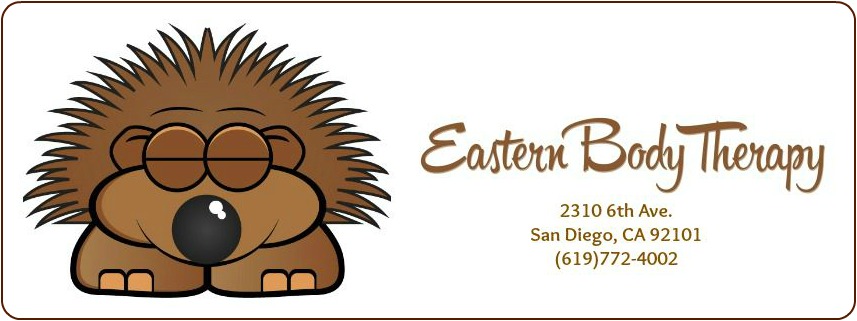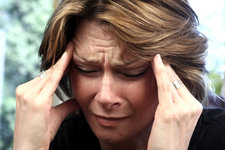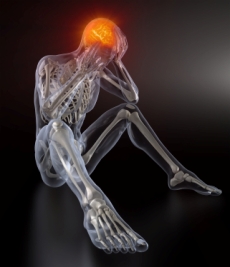 |
||
|
||||||||||
| About Us | ||||||||||
|
||||||||||
| Schedule Appointment | ||||||||||
| Help For Your Health | ||||||||||
|
||||||||||
| Testimonials/Success Stories | ||||||||||
| Our Blog | ||||||||||
 Yelp About Us Yelp About Us |
||||||||||
| Newsletter Archives | ||||||||||
| Resources and Links | ||||||||||
| FAQs | ||||||||||
| Home |
Acupuncture for Migraines
Migraine is defined as a unilateral (one-sided) headache which is moderate to severely painful, frequently accompanied by nausea, vomiting, sensitivity to light, and/or sensitivity to sound. 20-30% of migraine sufferers experience visual disturbances or auras before the onset of the headache. These auras can last from five minutes to over an hour, and may not be followed by headache pain. Approximately 90% of migraine sufferers experience nausea, and about 33% experience vomiting. (5) The mechanism of a migraine is not well understood. There are a variety of theories suggesting it is caused by dilation of blood vessels or hyperactivity of nerves. Nearly all migraines are accompanied by tight, tender muscles in the neck, head, jaw, and face, and it is unclear whether the tension causes the headache or whether the headache causes the tension. Hormone fluctuations are often a trigger for migraines, which is why women are more frequently affected than men. Other triggers can include atmospheric pressure changes, consumption of caffeine or alcohol, exposure to certain foods (common food triggers include chocolate, citrus fruits, hops, and gluten), stress, and exercise.
There is excellent scientific evidence that acupuncture is a viable and effective treatment for migraines, leading to reduced frequency of headaches, decreased headache intensity, and less time lost from work due to migraines. While migraine medications come with a litany of side effects including weight gain, diarrhea, nausea, vomiting, chest constriction, difficulty breathing, palpitations, and jitteriness, acupuncture has minimal side effects and is nearly always well tolerated. Acupuncture is also considerably less expensive than long term treatment with medications, although this benefit is less apparent to the person with a prescription drug plan through his/her health insurance plan. (2) In 2000, a team of Italian investigators examined the effectiveness of acupuncture versus a variety of pharmacological therapies in treating migraines. Their results, published in the Journal of Traditional Chinese Medicine, revealed that patients given acupuncture experienced fewer migraine episodes, missed fewer days from work, and suffered no side effects compared to patients on conventional drug therapy. They also found acupuncture to be more cost-efficient, estimating a savings of hundreds of millions of dollars in private and social health expenditures if it were used to treat headaches alone instead of drugs. (1,2) In 2001, the Cochrane Database conducted a review of studies regarding acupuncture treatment compared to medication for treatment of migraine headaches. At that time, the evidence in support of acupuncture was deemed to be promising but insufficient. Since this time, an additional twelve studies have been conducted. In 2009, this review was repeated. “Twenty-two trials with 4419 participants (mean 201, median 42, range 27 to 1715) met the inclusion criteria. Six trials (including two large trials with 401 and 1715 patients) compared acupuncture to no prophylactic treatment or routine care only. After 3 to 4 months patients receiving acupuncture had higher response rates and fewer headaches. The only study with long-term follow up saw no evidence that effects dissipated up to 9 months after cessation of treatment.” (3). The authors concluded: “available studies suggest that acupuncture is at least as effective as, or possibly more effective than, prophylactic drug treatment, and has fewer adverse effects. Acupuncture should be considered a treatment option for patients willing to undergo this treatment.” (3) If you or someone you know suffers from migraines, I can help! Call me at (619)772-4002 to discuss your specific situation and schedule an appointment.
(1) Editorial Staff. Acupuncture Superior to Drug Therapy for Migraines: Study Highlights the "Exceptional Usefulness" of Treatment. Acupuncture Today. April 2001, 02(04) . (3) Linde K, Allais G, Brinkhaus B, Manheimer E, Vickers A, White AR. Acupuncture for migraine prophylaxis. Cochrane Database Syst Rev. 2009 Jan 21;(1):CD001218.
|
*DISCLAIMER: Testamonials used on this site are real comments made by people who have worked with us. As with any medical treatment, we cannot guarantee results and individual experiences may vary.
Images of people on this site are used for illustrative purposes only. The models depicted should not be construed to endorse any products or services promoted on this site, nor should they be construed to have any healthcare issues discussed on this site.Copyright © 2001-2017 Eastern Body Therapy. All Rights Reserved.

 Migraine headaches affect approximately 10% of the population world wide. Women are affected about three times as often as men, with up to 35% of all women experiencing some migraines during their lifetime. (5) According to the National Headache Foundation, as many as 28 million Americans suffer from migraine headaches each year. (4)
Migraine headaches affect approximately 10% of the population world wide. Women are affected about three times as often as men, with up to 35% of all women experiencing some migraines during their lifetime. (5) According to the National Headache Foundation, as many as 28 million Americans suffer from migraine headaches each year. (4) Treatment of an acute migraine is generally achieved with pain medication. For frequent migraine sufferers, “prophylactic” medications are often tried to prevent the headaches. Beta blockers such as Propranolol are effective for some patients, and a small percentage are helped with tri-cyclic antidepressants such as Elavil. Treatment is considered to be effective if there is a 50% reduction in headache symptoms including frequency, duration, and intensity. (5)
Treatment of an acute migraine is generally achieved with pain medication. For frequent migraine sufferers, “prophylactic” medications are often tried to prevent the headaches. Beta blockers such as Propranolol are effective for some patients, and a small percentage are helped with tri-cyclic antidepressants such as Elavil. Treatment is considered to be effective if there is a 50% reduction in headache symptoms including frequency, duration, and intensity. (5)